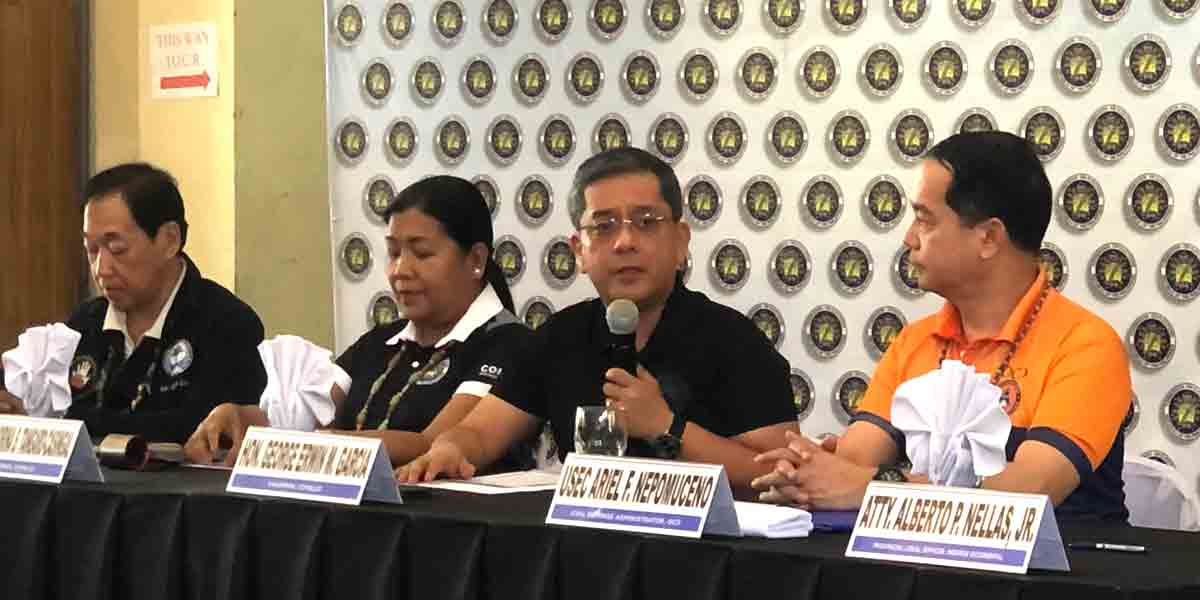
By Mariela Angella Oladive
As the impact of the El Niño phenomenon continues to intensify, Iloilo province finds itself among the hardest-hit regions, with significant damage to agriculture and water scarcity threatening communities.
According to the recent reports from the Department of Agriculture (DA) during the Bagong Pilipinas brief on February 29, it revealed that Iloilo has suffered agricultural losses amounting to P127 million, making it one of the most affected areas in the country alongside Oriental Mindoro with P56 million loss.
The latest report from the National Disaster Risk Reduction and Management Council (NDRRMC) shows that the damage to agriculture caused by the El Niño phenomenon has soared to over P941 million.
This figure includes production losses and the cost of damage, amounting to P941,730,702.
Among the regions affected, Western Visayas reported the highest agricultural damage, totaling P564,056,192, followed by Mimaropa with P319,755,957, Ilocos with P54,450,077, Calabarzon with P2,750,947, and Zamoanga with P717,527.
The prolonged dry spell has taken a toll on farmers and fisherfolk, prompting the government to implement various measures to mitigate the impact of the drought.
The DA, through its Agricultural Credit Policy Council, has allocated funds amounting to P500 million to provide financial assistance to affected farmers and fisherfolk.
Additionally, the Philippine Crop Insurance Corp. has earmarked P1.8 billion for insurance claims, offering relief to farmers facing crop losses.
“Farmers in affected areas can claim at least P20,000,” said DA Assistant Secretary and spokesperson Arnel De Mesa.
To address the pressing need for water amid the scarcity brought about by El Niño, the Bureau of Fisheries and Aquatic Resources has allocated P500 million in fuel subsidy for fishermen.
Moreover, the national government is set to distribute shallow tube wells and solar-powered irrigation systems in areas with sustainable water sources, with a budget of at least P500 million allocated for this purpose.
Similarly, in anticipation of worsening conditions, the Iloilo City Government has been proactive in implementing preparedness and mitigation measures.
Under the leadership of the City Disaster Risk Reduction and Management Office (CDRRMO), initiatives such as the “RISE against Drought” campaign have been launched to raise awareness and engage various sectors in addressing the challenges posed by El Niño.
Furthermore, the city government has collaborated with water providers and private institutions to ensure access to water for residents and agricultural activities.
Rainwater harvesting facilities and water rationing measures have been put in place to alleviate the effects of water scarcity on the community.
While the Iloilo province recently convened a coordination meeting to develop an El Niño Response Plan, focusing on various strategies to mitigate the impacts of the phenomenon.
Key topics discussed included continuous weather monitoring, rapid assessment of damages, and implementing relief measures for affected communities. The plan emphasizes water conservation, disaster risk reduction, and promoting resilient agricultural practices.
In an interview on Wednesday, Department of the Interior and Local Government (DILG) Región VI Director Juan Jovian Ingeniero, assured that the local government units are actively engaged in preparations, with close coordination among agencies and LGUs to address emerging challenges.
“In our preparations, we ensure that every LGUs have an action plan when it comes to drought, making sure that the reservoir is ready,” Ingeniero said.
The DILG encourages LGUs to manage water resources efficiently in their respective areas and collaborate with regional DRRMC for support.
In response to the situation, both the city and provincial government remain vigilant and ready to provide assistance as needed.




















